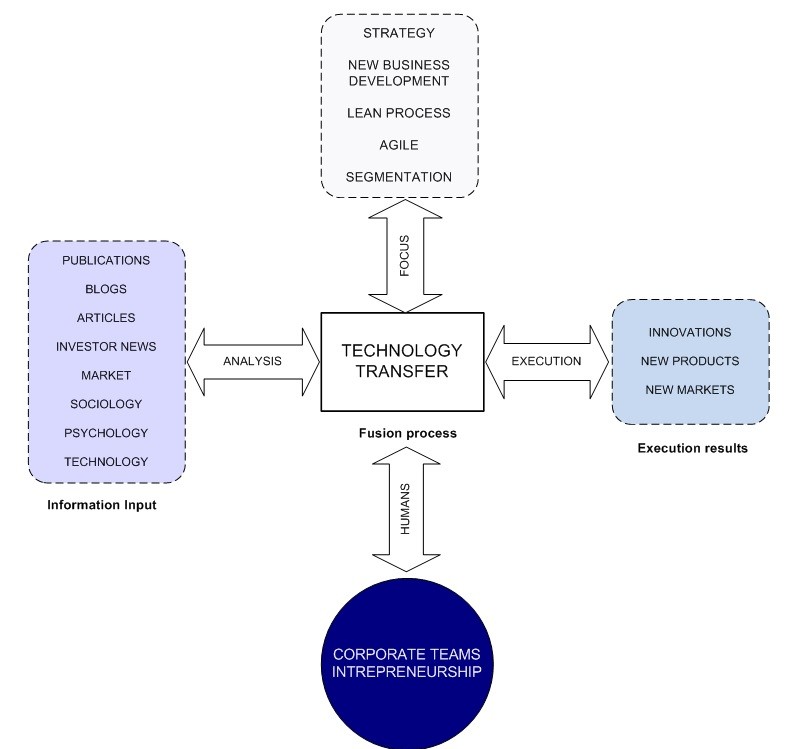Vassilis Nikolopoulos is CEO and co-founder of Intelen, Inc, a New York-based emerging startup focused on smart grid big data applications and energy analytics/engagement. I had a chance to catch up with him a few weeks ago at Greentech Media’s Grid Edge Live conference in San Diego. In part, I wanted to follow up on the interview he did back in April 2013 with Greentech Media President Rick Thompson, in which they discussed the networked grid and what Intelen does to optimize energy efficiency in buildings. That includes Intelen’s integrated engagement platform that combines data analytics with human behavior. In that interview, Nikolopoulos talks about Intelen’s dynamic approach to “gamifying” demand response using mobile applications and its engagement platform. Here, we talk about the “human element” of the energy efficiency equation, on the energy cloud and on how utilities will need to change their business models in this rapidly evolving market. Cross posted from Scaling Green.
Tigercomm Executive Vice President Mark Sokolove: Intelen recently released a white paper about optimizing not just technical approaches to managing and reducing energy consumption, but also about focusing in on the human element of the equation. Can you tell us a bit about Intelen’s work in better analyzing and mapping human behavior relating to building consumption?
Intelen CEO Vassilis Nikolopoulos: Sure. One of the biggest challenges and problems in the engagement domain is how you actually measure engagement, because human behavior is something intangible. So we had to provide some way, we had to innovate in order to create a data-driven technology to measure the actual behavioral change and to see human engagement going on. What we did was to create a unique data analytics platform: a combination of a dashboard, a learning management system and a mobile app that can act as an information and educational gateway in between the cloud platform and the humans. As we all know, smart phones can be considered as your digital extension to your behavior.
So what we did was to approach the engagement problem from a human perspective and not from a utility perspective. Right now, the definition of engagement is it’s something the utilities want. Utilities want that because they just set up smart meters, so as soon as they understand the value of data and what lies beneath, they go and search for an optimized engagement mechanism to engage their customers. On the other side, we go in and approach the engagement problem from the customer’s side and not from the utility’s side.
So, we set out and we have analyzed, after several years of continuous R&D, specific, permanent human needs that can sustain a continuous engagement philosophy and procedure. We built the so-called subliminal learning technique. What is this? Based on our R&D, we found out that if we create training and educational material around an educational objective and we “gamify” the educational objectives, we can actually change human behavior.
How do we do this? By offering training materials to users, to people, to students, to customers, based on their behavioral aspects. Let’s say that you want to change student behavior – to set up the thermostats in their dorms correctly, for instance. We go and create educational material that can last 2-4 weeks, and we have as an educational objective to raise awareness on this specific topic by offering multiple-choice quizzes, tips, announcements and multimedia content, articles, videos, how-to guides, and other educational features about how to correctly set up the thermostat. We offer videos, surveys, educational material you can use from your smart phone app. At the same time, we “gamify” the whole experience and we offer the possibility of prize incentives or social competitions.
Then, we go and we measure 5-6 important data-driven engagement metrics. We measure engagement. We measure efficiency. We measure participation, knowledge, commitment and influence. Those are metrics for which we have data from the mobile app, social networks, demographics, real-time energy data and our dashboard. Based on this combined data, we create data-driven human behavioral metrics. So we know exactly how engaged you are with the platform, how efficient you are in switching the lights on and off, or how efficient you are in setting up the thermostat.
Of course, we measure the impact because we have the data monitoring platform that can be hooked up to smart meters. We have some great partnerships in this space, such as Obvius, where by using their advanced data loggers, we can track energy or water information to the second, and we can measure the immediate impact of our engagement. So, as soon as we engage you and offer you this material to change your human behavior, we can measure the impact to the actual building’s consumption. It’s like closing the loop. First of all, we know how to engage people. We know how to quantify this engagement mechanism. We have the real-time Key Performance Indicators that actually measure the engagement and can actually measure also the result of this engagement to the actual daily consumption.
M.S.: So taking that example of the college dorms, what kind of participation rates have you seen? 
V.N.: The participation is high. Currently, after July 15, we are starting another big engagement pilot with a top university in Boston. We have already run many pilots with over 20 U.S. universities and several commercial clients as well. So we have great participation that is continuous. The secret here is how to actually make this participation go on and on.
In the mobile app we have created a crowd feeding mechanism, features actually, where the user of the app pushes valuable information to us. This means that we actually register building faults to the platform, such as thermal discomfort, lights/mechanical problems, HVAC problems, etc. Building faults could be that the thermal discomfort level inside a classroom or inside the building or a room is rising, which means that something went wrong with the HVAC or the set point of the thermostat. So, as soon as you keep people engaged, and as soon as you give them the possibility and the power to push data -and of course by pushing data at different points you’re just raising some awareness, then you give badges and things like that.
At the same time, because we’re talking about how to socialize the whole thing, we call it social engagement. Thus, at the same time, you can see how your colleagues are performing, by using our live news feeds and status updates. You can see that I just scored a 87% in the recycling quiz so I want to compete with you, not in the general and classical leader boards but in the specific knowledge area. Based on the social network effect, we help keep the users engaged, because they want to learn and get educated in a social classroom
M.S.: Where do you see utilities going in terms of adapting their business models from a centralized, top-down grid model to a more decentralized, distributed, smart grid model proceeding in coming years? Any thoughts on the emergency of the “energy cloud” and energy data analytics in general?
V.N.: That’s a very good question. In the utility space, right now, there is a big change, there is a big transformation going on. Because utilities are searching for new ways to engage people. So what we are proposing to utilities is to create live customer communities. Community management in general is something really strong. Imagine that the utility’s objective is not just to send a monthly utility bill and that’s all. They have to educate their customers, they have to make them believe that they are next to them all the time, they are educating them about energy efficiency. At the same time they need to focus on some other social and community-based areas, let’s say recycling, volunteer management, etc
This is extremely important for the utility. What we want to do for the utility is to help them transform themselves to a social university about energy efficiency and sustainability. We want to help them transform into entities that can manage communities. By doing that, they will of course enhance their communication with the customer, and they will become more social entities rather than the financial entities that they are now. In short, it’s a transformation from being a financial entity to a social entity.
M.S.: Any thoughts on the emergence of the energy cloud and energy data analytics in general.
V.N.: That’s a big discussion. Right now, analytics is a big buzzword, everybody’s doing it. Analytics is the means to do things. There are many niche markets to that. You can have analytics for the grid management, you can have analytics for the HAN (home area networks). A big question, a big challenge will be how to actually harvest and get data from inside houses and homes. This is something very important, because in my opinion, in a couple of years you will have the utility meter only for billing purposes and that’s all. All the other information we will be able to get it directly from the appliances; you know, the internet of things.
This is a space where Google and Apple will battle. So just sit down, sit back and watch. But at the same time you have to be proactive, you have to be ready to step into this space and get the data that humans will be able to get. So for me, in the future, it is that the people will be at the top of the data chain, and that the people will actually choose who is going to be the stakeholder that will get their data based of course on the incentives that they will receive from them.
M.S.: If you could project out 10 years, how do you see the energy management space evolving in general?
V.N.: That’s a tough question. Actually, you cannot…I mean, the market is moving so fast, there are many disruptions entering into the space, it’s hard to predict and estimate. But for me, it’s going to be a very volatile, dynamic ecosystem.
Just to mention a very simple business case that we had analyzed 1 year ago, the electric vehicle case: imagine that by giving specific incentives to humans, you change their behavior. Then, this change of behavior has impact to other things – the way people drive, the way they park, or where exactly they park their electric vehicle. And that, in turn, changes the way they consume energy inside buildings or inside their offices, even the entire grid management philosophy. So for us, this is why we’re a human-centric company. We follow human engagement to all the buildings that a human can be: at his university, at his home or at his work.
So for me, the important factor is that humans will evolve. And as the humans evolve, the technology will evolve as well. And this will create new business models and new amazing ecosystems. But for me, it’s going to be a very volatile ecosystem. Things are moving very fast. You’re going to have storage, you’re going to add renewable energy sources to the grid, distributed energy sources, electric vehicles. You’re going to have some other disruptive energy harvesting products. But for me, right now, the key variable is the people.
Source: http://www.renewableenergyworld.com/rea/blog/post/2014/07/intelen-ceo-on-approaching-energy-efficiency-engagement-from-a-human-not-utility-perspective?page=2
 v.n.
v.n.
